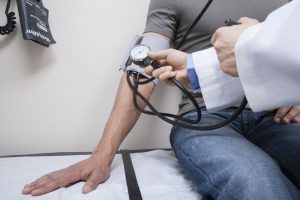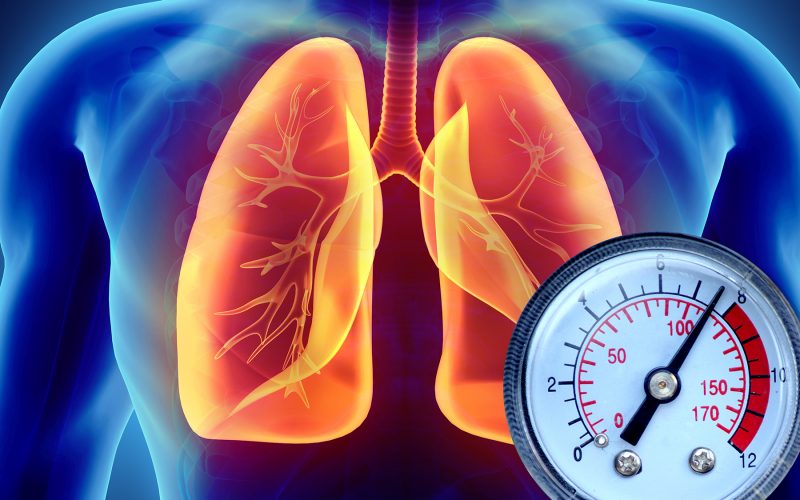Arterial hypotension is a condition in which blood pressure drops to a level that a person can feel.
The magnitude of such a decrease is individual, but usually it is below 100/60 mm Hg. for men and 95/60 mm Hg. for women.
Arterial hypotension can be acute and chronic.
Acute hypotension (collapse [a sharp drop in vascular tone], shock [paralytic vasodilation]) is usually accompanied by a decrease in oxygen supply to the brain (hypoxia) and a decrease in the functions of vital organs, which requires immediate medical attention. The severity of the condition is determined here not so much by the magnitude of blood pressure as by the speed and degree of its decrease.
Acute arterial hypotension can occur in acute circulatory failure, severe poisoning (alcohol, drugs, drugs, especially fast- and short-acting, for example, clonidine, nifedipine, captopril, nitroglycerin, etc.), acute infection and sepsis, blood loss, dehydration. Thus, acute hypotension is more often a complication of the disease, has an obvious cause, which should first of all be taken into account in emergency treatment.
People prone to chronic arterial hypotension, as a rule, are not subject in the long term to such a high risk of cardiovascular complications as “hypertensive patients” and they are unnecessarily paid much less attention. At the same time, in old age, hypotension increases the risk of ischemic stroke, and in a young age it worsens the quality of life and reduces the ability to work.
Why does this happen?
Chronic hypotension can be an individual variant of the norm: it appears as a result of high fitness (among athletes), serve as an adaptation mechanism (among residents of the highlands, the tropics, and the Arctic). In these cases, it is not a disease and is not felt by a person.
At the same time, chronic arterial hypotension can be an independent disease or a manifestation of another disease. It leads to a violation of vascular tone (for example, with vegetative vascular dystonia, some endocrine diseases) or a decrease in cardiac output (with heart failure, aortic valve stenosis, arrhythmias).
How does it manifest?
Orthostatic (postural) hypotension, an additional decrease in pressure immediately after the transition from a horizontal position to a vertical one, can be a peculiar and sometimes the main manifestation of arterial hypotension of any nature. It usually lasts 1-3 minutes. Orthostatic hypotension often occurs in the morning, accompanied by a deterioration in the blood supply to the brain – dizziness, darkening of the eyes, tinnitus. It sometimes leads to fainting (with the risk of ischemic stroke) or falling (with the possibility of injury or fracture), especially in the elderly. Orthostatic hypotension is promoted by prolonged bed rest, severe illnesses, operations, and many medications.
Chronic arterial hypotension, in addition to the above, can manifest itself as weakness, fatigue, nervousness, fatigue in the morning, low efficiency, headaches, a tendency to faint, and sometimes pain in the heart. Poor tolerance to cold, heat, stuffiness, physical exertion, chilliness are also characteristic.

Diagnostics
Hypotension can be detected by a systematic change in blood pressure at different times of the day (the so-called pressure profile). In some cases, 24-hour pressure monitoring may be required.
Diagnostics necessarily includes the search for a disease that led to a decrease in pressure. For this purpose, in addition to a detailed survey and examination of the patient, a cardiologist may prescribe an ECG (including exercise ECG and 24-hour ECG monitoring), Doppler echocardiography and other studies.
Treatment
Treatment of chronic arterial hypotension is usually complex. It includes the normalization of lifestyle (rational alternation of work and rest, adequate sleep), proper nutrition, exclusion of bad habits. An important component of treatment is dosed physical activity (physiotherapy exercises), walks in the fresh air, and a contrast shower.
From medicines, natural tonic preparations based on ginseng, eleutherococcus, aralia, lemongrass and other plants are used.
Of course, if hypotension https://en.wikipedia.org/wiki/Hypotension develops as a complication of another disease, treatment of the underlying disease is necessary.
